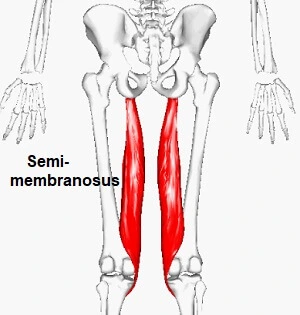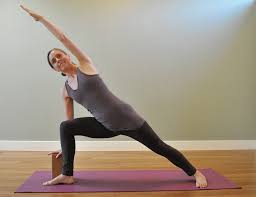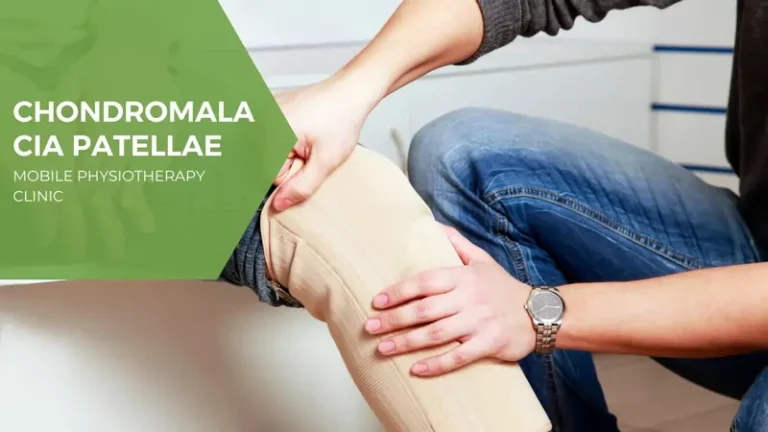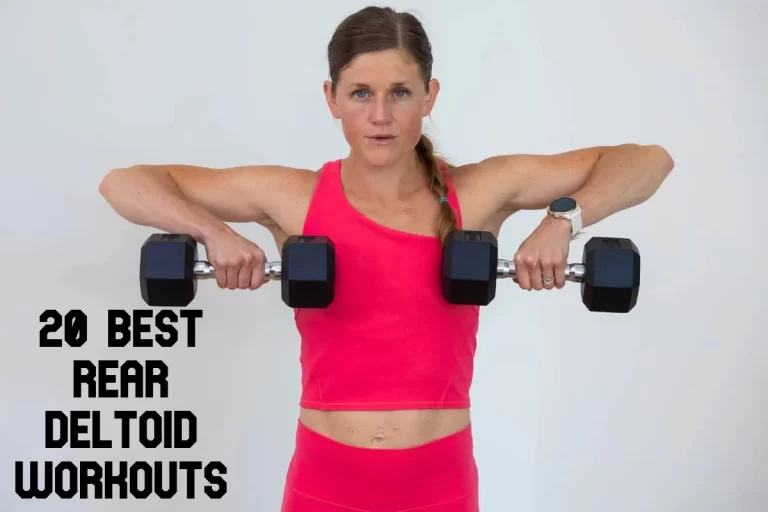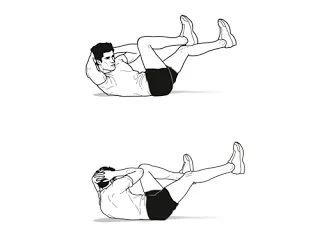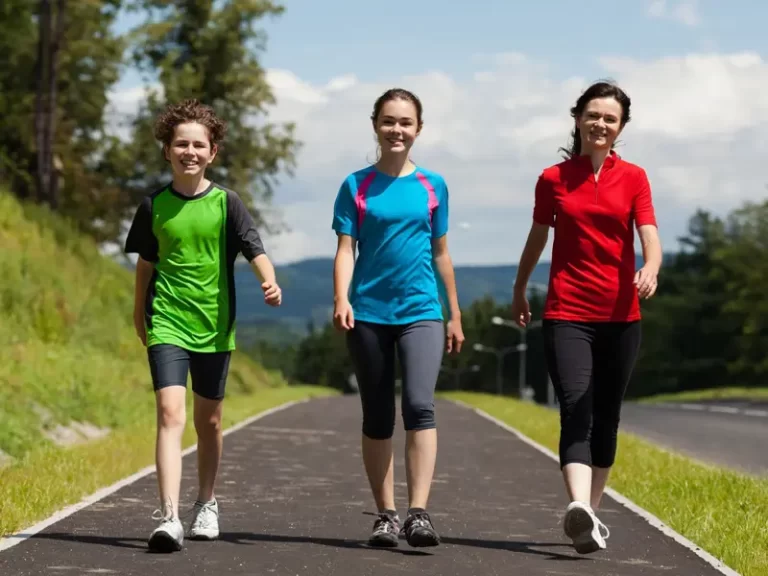Semimembranosus muscle exercise
Table of Contents
Introduction
- Semimembranosus muscle exercise includes different types of exercises such as stretching exercises, strengthening exercises, and Neuromuscular Inhibition Techniques. strengthening exercise helps to improve Joint flexibility, Increased muscle mass, Stronger bones, Weight control, and Balance. stretching exercise Improves your performance in physical activities, Decreases your risk of injuries, Helps your joints move through their full range of motion, and Increases muscle blood flow. Enable your muscles to work most effectively, Improve your ability to do daily activities.
- The semimembranosus is named because of the flat membranous form of its proximal attachment. It also attaches to the ischial tuberosity but more superiorly compared to semitendinosus and the long head of the biceps femoris muscle. Distally, the semimembranosus muscle tendon extends to contribute to the fascia and ligaments of the knee joint. It is the most medial muscle of the hamstrings and can be found underneath the semitendinosus muscles.
- The semimembranosus muscle exercise includes three types of exercise
- Stretching exercise
- Strengthening exercise
- Neuromuscular Inhibition Techniques
Stretching exercise
Benefits of stretching exercise
- Increase muscle blood flow.
- Improve your performance in physical activities.
- Help your joints to move through the full range of motion.
- Decrease your risk of injuries.
- Enable your muscles to work most effectively.
- Improve your ability to do daily activities.
Stretching in the Standing position (Both Legs at Once)
Stretching is done in the standing position and stretches both legs at once.
Stand and cross your left foot in front of your right foot of yours.
Slowly lower your head to your left knee by bending at the waist.
Keep both knees straight.
Hold this position for approx 15 to 30 seconds.
Than relax.
Repeat for the other side by crossing your right foot in front of your left foot.
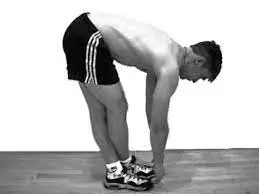
Muscle Stretching with the towel
- Muscle Stretching with the towel is a simple stretch to do.
- Lie on the floor on your back.
- Loop a long bath towel around your foot and hold the ends of the towel in both hands.
- Slowly pull on the towel to lift your leg straight up. Be sure to keep your knee straight. Your other leg should remain in contact with the floor.
- Bring your leg up until you felt a stretch behind your thigh. You can feel a stretch in your calf area.
- Hold this position for approx 15 to 30 seconds, and then relax.
- You can repeat this exercise three to five times on each leg.
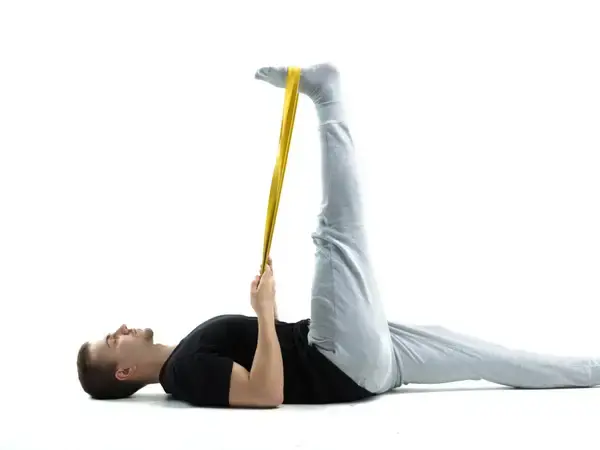
Wall stretching
- A Wall stretch is performed at the corner of a wall.
- Keeping one leg on the ground, place the other leg against a wall.
- Gently push the knee towards the wall so that the raised leg is as straight as tolerable.
- Hold the position starting for 10 seconds, and gradually work up to 30 seconds.
- Perform Wall stretch with each leg, one at a time, 4 to 5 times for one complete set. Aim to perform 2 sets daily.
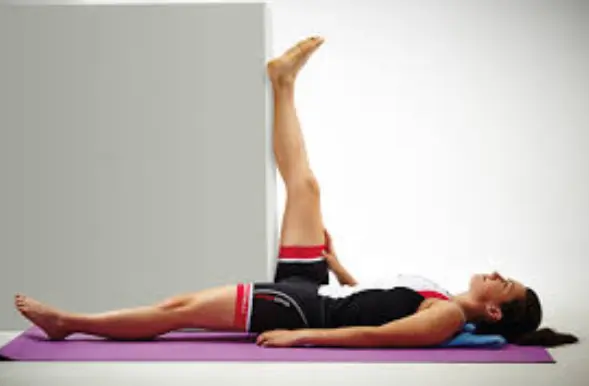
Muscle Stretches While Sitting
- Stretching while in a seated position is less gentle than stretching while lying on the back. While using a sitting position, the degree of a stretch according to based on the pain level. An important part of this technique is to avoid the lower back rounding; instead, fold forward at the hip.
- Sit on the edge of a chair, and straighten one leg in front of the body with your heel on the ground.
- Straighten your spine by sitting tall and rolling the pelvis forward.
- Hold this stretch for approx 30 seconds.
- Repeat this exercise 3 times for each leg. Aim to perform this exercise twice daily.
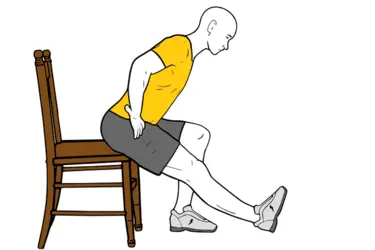
Strengthening exercise
Benefits of strengthening exercise
- Joint flexibility: Strength training helps joints stay flexible and may decrease the symptoms of arthritis.
- Increased muscle mass: Muscle mass naturally decreased with age, but strength training can help reverse the trend.
- Stronger bones: Strength training increases bone density and reduced the risk of fractures.
- Weight control: As you gain muscle, your body begins to burn calories easily, making it easier to control your weight.
- Balance: Strengthening exercises can increase flexibility and balance, which reduces injuries and falls.
Hamstring Sets
- This strengthening exercise is the best to start initially, especially after an injury because it doesn’t require any knee movement. It is very easy to control how hard you work the hamstrings by changing how hard you push the heel downward.
- Lie flat on your back, with your knee slightly bent and your heel on the ground
- Press the back of your heel firmly downward. You should feel the muscles in the back of your thigh contracting. Hold for 5-10 seconds and then relax.
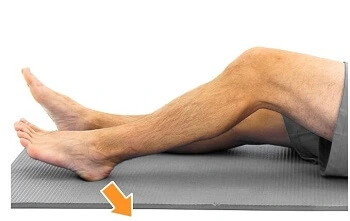
Prone hamstring curl
- Lie down on your stomach
- Bend your knee to pull your heel toward your buttock, keeping your thighs and hips on the ground.
- Stop when you can’t pull any further. Return to starting position.
- Do 12 to 15 repetitions
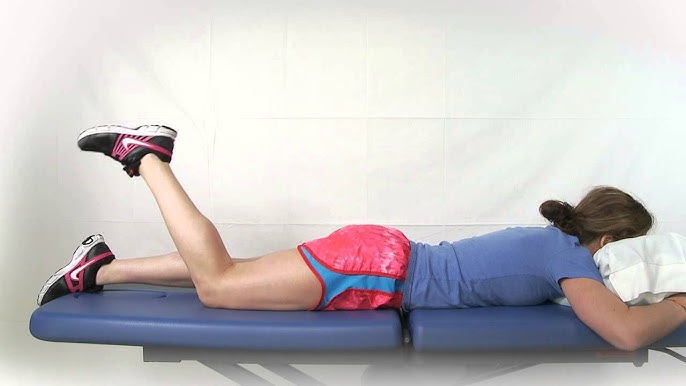
You can also use resistance in progression to improve the strength of the muscle. Resistance can be applied manually, Theraband or spring.
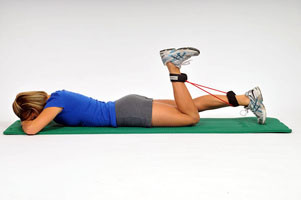
You can also do hamstring curl exercises in a standing position.
Lift your foot back behind you bringing it up towards your buttock as high as you can. Hold for 3 to 5 se
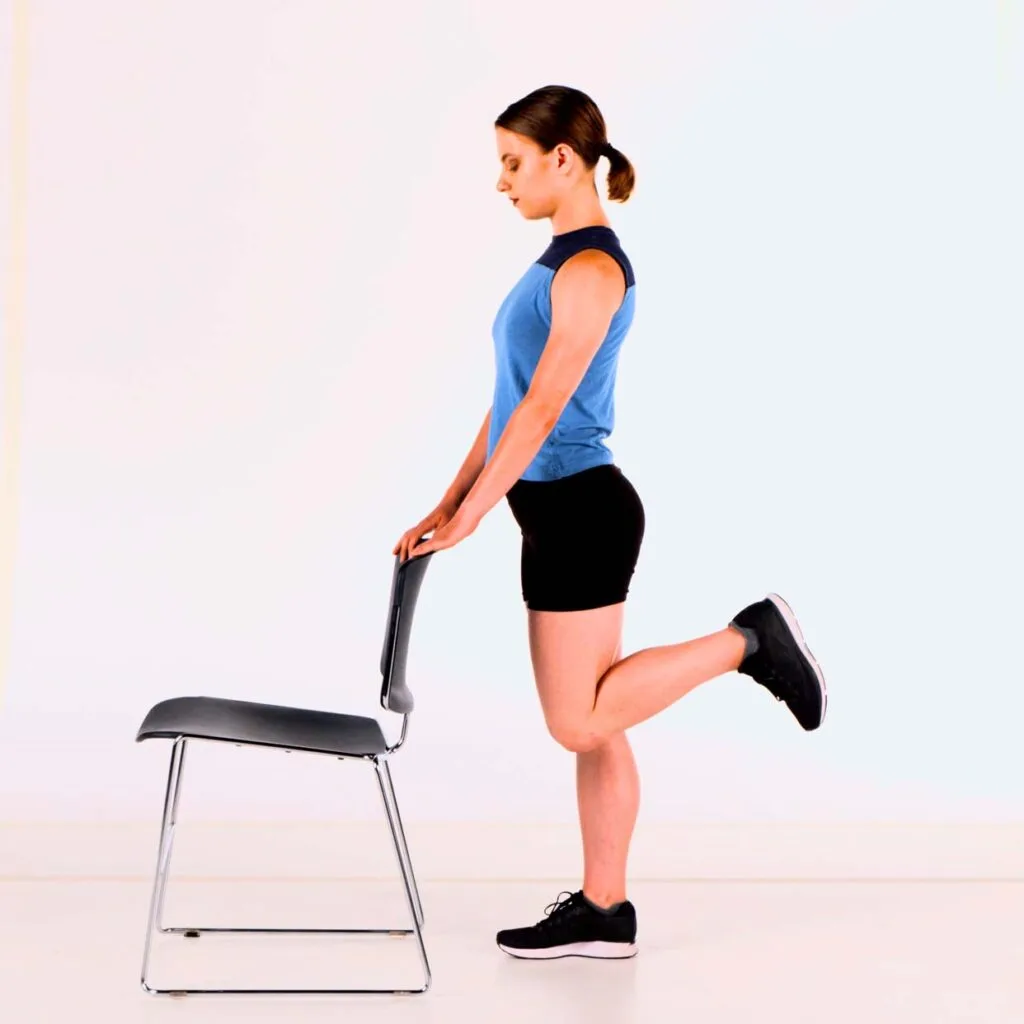
Isometric exercises
- These exercises work on the muscles without movement. it is important to do them at different amounts of knee bend.
- Lie on your stomach.
- A therapist provides resistance as you contract the hamstring muscles, hold for 3 or 4 seconds and then relax.
- Change the amount your knee is flexed to work the muscle at different lengths.
- Once you have worked the muscles through a different range of angles, repeat with your foot turned outwards. Then again with your foot turned inwards. This targets the inner and outer hamstring muscles.
Multiple-Angle Isometric Exercises
Patient position and procedure
- The patient’s position is Supine or long-sitting. Apply either manual or mechanical resistance to a static hamstring muscle contraction with the knee flexed to several positions in the Range of motion.
- Place the tibia in internal rotation or external rotation prior to resisting knee flexion to emphasize the medial or lateral hamstring muscles, respectively.
- Teach the patient to apply self-resistance at multiple points in the Range of motion by placing the opposite foot behind the ankle of the leg to be resisted.
Neuromuscular Inhibition Techniques
Patient position and procedure
The patient’s position is Supine, with the hip and knee extended as much as possible. Resist knee flexion movement with an isometric hold using your hand proximal to the ankle; have the patient relax and then passively (or have the patient actively) extend the knee joint into the end of the range (hold–relax and hold–relax/agonist-contraction techniques, respectively).
Patient position and procedure
The patient’s position is Prone, with the hip and knee extended as much as possible. Place a small pad or folded towel under the femur proximal to the patella to protect the patella from compressive forces. Stabilize the pelvis to prevent hip flexion and then apply the hold–relax technique to increase knee extension.
Semimembranous muscle exercise at Home
Following list of exercises, we can do at home
- Stretch in the Standing position (Both Legs at Once)
- Muscle Stretching with the towel
- Wall stretching
- Muscle Stretches While Sitting
- Hamstring Sets
- Prone hamstring curl
Bodybuilding of the Semimembranous muscle
Bodybuilding of the Semimembranous muscle includes different exercises like Barbell Squats, Dumbbell Squats, Lying Leg Curls, Deadlifts, Stiff-Leg Deadlifts, and Seated leg curl
Lying Leg Curl
Lie face down on the leg twist machine with the cushion resting simply under your calves. Get the side handles and keep your body level on the seat as you twist your advantages beyond what many would consider possible. Lower and repeat. More From Fitness.
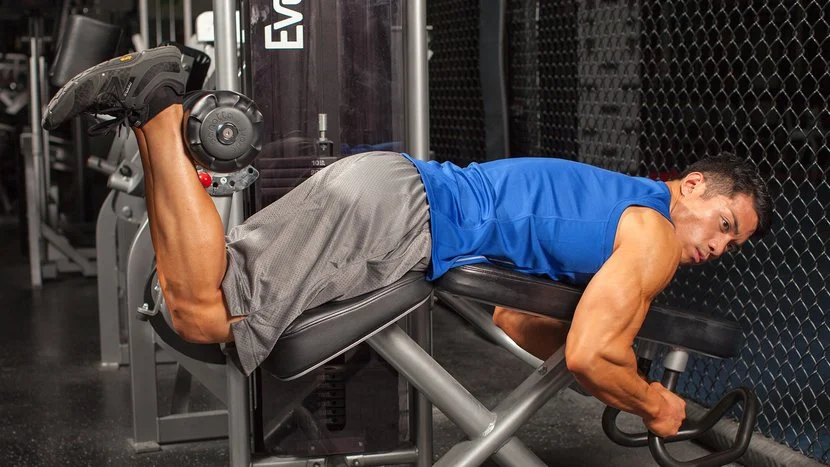
Deadlift
The deadlift is a weight lifting exercise in which a loaded barbell or bar is taken off the ground to the level of the hips, middle opposite to the floor, prior to being put back on the ground

Stiff-Leg Deadlift
The stiff leg deadlift is an isolation movement that explicitly targets hip flexion and extension, and can be performed by all athletes to improve muscle strength, hypertrophy, and neuromuscular control of the muscles get involved in powerful and explosive movements.
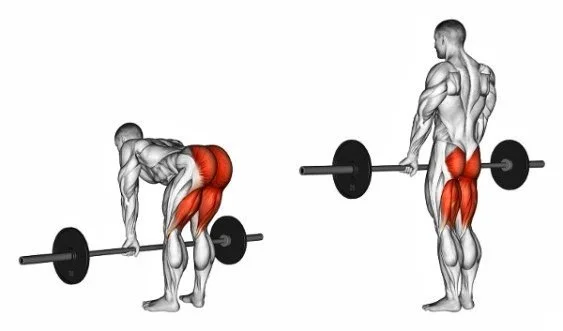
Seated leg curl
The seated hamstring curl exercises you can do with a weight machine to work the muscles in the back of the thigh. As the name suggests, the seated hamstring curl focuses on the hamstring muscles here in the back of the thigh. strong hamstring muscles help to protect your ligaments in the knee joint.
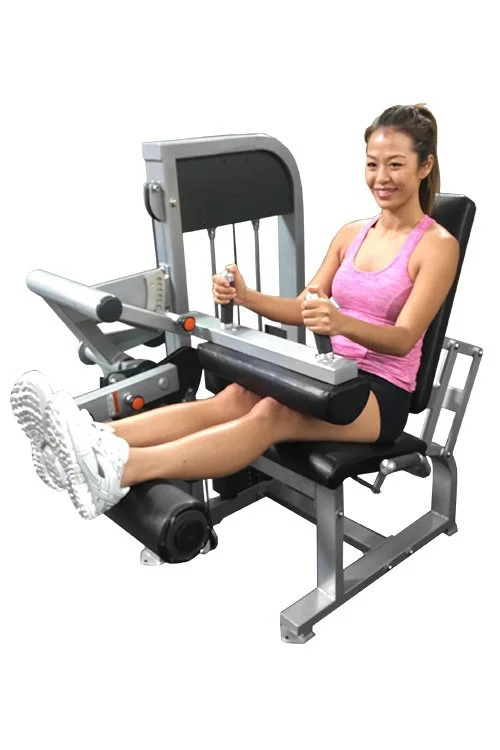
What are the common mistakes to Avoid during Semimembranosus muscle stretch?
There is a certain mistake you should not do during stretch :
- Bending your knees: If you want perfect Semimembranosus muscle stretch while sitting, try to keep your legs straight. If your Semimembranosus is tight, so you need to bend your knees, simply do not stretch forwards as much. Remember that increasing Semimembranosus flexibility takes time.
- Hunching over the shoulders: Try to hinge at the hip level, rather than hunching from the shoulders. Imagine reaching ‘up and over the legs and trying to keep your spine in the normal position. It’s good to have a neutral spine and not move as far forwards as to hunch over just to touch your toes.
- Not flexing the toes of your working leg: The toes of your extended leg must be pointing upwards so that your leg remains straight.
- Not having your hips square: Keep your hips facing forwards and side to side with each other. This helps to maintain your pelvis correctly aligned and also avoids unequal strain on the hips.
- Arching your lower back: Try to maintain your lower back as flat as possible to the ground and your pelvis neutral. This assures that you don’t strain your lower back and do a safe Semimembranosus muscle stretch. You can even put a towel or blanket under your lower back for more support.
- Wrong alignment: Make sure that your hips are parallel directly over your feet, rather than pushing your buttock out behind you. This assures that you are feeling the stretch in your Semimembranosus muscle.
- Over-stretching: There are advanced Semimembranosus muscle stretches available, but be careful not to use the band too much which can cause injury. Don’t overstretch with a strap.
- Moving too quickly: During dynamic Semimembranosus stretch, the motion should be relatively slow and controlled so that you can feel the stretch in your Semimembranosus muscle. The fast motion does not give your muscle a benefit.
- Not engaging your core: Though this is a Semimembranosus muscle stretch, it is still important to work on your core to protect your lower back from strain.
What are the safety and precautions for Semimembranosus muscle stretch?
Here are a few tips to make the Semimembranosus stretch safer and more effective:
- Don’t bounce. Bouncing triggers a mechanism known s the stretch reflex. This may cause more muscle contraction, not less.
- Lift the sitting bones toward the roof. This lengthens the Semimembranosus muscle.
- Assure your hips are directly over your feet. Your buttocks are not behind your feet. This error can make the stretch less effective.
- If the core muscles are weak then need to use a table or other surface to help you come back up to standing during the squat stretch.
- A rule of thumb for safety is only going as far as you can without feeling back pain or any type of insecurity.
- Do not stretch while you’re in pain or try to force a stretch. Breathe normally while performing stretching exercises. Try to do Semimembranosus muscle stretches into your routine for at least 2 to 3 days per week.
FAQ
You can do different types of exercises to release tight semimembranosus muscles such as Muscle Stretching with the towel, Wall stretching, Muscle Stretches While Sitting, and Stretching in the Standing position (Both Legs at Once). Stretch in the Standing position (Both Legs at Once) exercise Stretch is done in the standing position and stretches both legs at once. Stand and cross your right foot in front of your left foot of yours and Slowly lower your head to your right knee by bending at the waist. Keep both knees straight. Hold this position for about 15 to 30 seconds and Then relax. Repeat this exercise for the other side by crossing your left foot in front of your right foot.
To strengthen the semimembranosus muscle you can do different types of exercises such as Hamstring Sets, Prone hamstring curls, Isometric exercises, and Multiple-Angle Isometric Exercises. This exercise helps to improve Joint flexibility, Increased muscle mass, Stronger bones, Weight control, and Balance. You can do all these exercises with 10 to 15 repetitions and 2 to 3 per day.
Most of the time the weakest hamstring muscle is the semimembranosus muscle. If you were to be training on a lying leg curl machine, your feet should be turned inward, with your toes pointed at each other in order to target your semimembranosus muscle. semimembranosus muscle is paramount to training as one of its main functions is to stabilize the knee joint.

